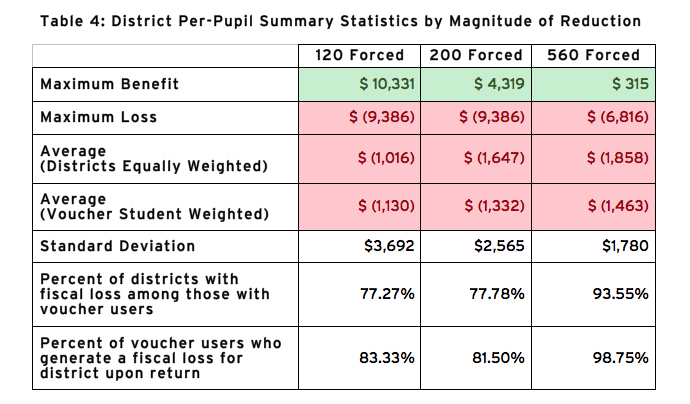Governor John Bel Edwards recently cut funding of the Louisiana Scholarship Program (LSP), claiming that it was necessary to save money. In our most recent study, Julie Trivitt and I consider the effects that this reduction in the program will have on individual districts. We also examine the impact of completely eliminating the program on the individual school districts. We find that both scenarios (the theoretical elimination and the actual reduction of the program) will actually result in a financial loss to most of the individual school districts. In fact, in every estimation, over 80% of student transfers will result in a financial loss to individual districts.
 At the beginning of the 2016-17 school year, 442 students from 34 different districts who have already accepted voucher awards for the program have been put on a waitlist due to the budget cuts. Assuming that this keeps 442 students enrolled in district schools rather than private schools, this would result in a net increase in state overall education expenditures of more than $600,000. Based on historical attrition rates, if all the students on the waitlist remain on the waitlist, the number of voucher users this year will be about 560 lower than last year. If LSP funding is increased so that all waitlist students receive vouchers, the number of voucher users would still be about 120 smaller than last year.
At the beginning of the 2016-17 school year, 442 students from 34 different districts who have already accepted voucher awards for the program have been put on a waitlist due to the budget cuts. Assuming that this keeps 442 students enrolled in district schools rather than private schools, this would result in a net increase in state overall education expenditures of more than $600,000. Based on historical attrition rates, if all the students on the waitlist remain on the waitlist, the number of voucher users this year will be about 560 lower than last year. If LSP funding is increased so that all waitlist students receive vouchers, the number of voucher users would still be about 120 smaller than last year.
We estimate the district effects assuming that the number of voucher users is 120, 200, and 560 students smaller than last year. Since the LSP has been reduced in size, students using the voucher in private schools will transfer back to their local public school districts. When that happens, local districts will receive additional revenue from the state, but they will also incur additional costs to educate these students. For each district, we compare the additional costs incurred to the additional funding received from the state. In each of the three reduction scenarios, the average outcome for the affected districts is a financial loss of about $1,000 – $1,850 per student. In every scenario, more than four out of every five student transfers would result in a financial loss for the local district. These results are summarized in Table 4 below:

John White, the Louisiana Education Superintendent, has a plan to remove voucher students off of the waitlist. The plan involves private schools enrolling the waitlisted students with the possibility of receiving public funding in the spring. This will likely reduce the number of students on the waitlist, but I’m not sure how many schools will be willing to take this risk.
If the Louisiana Department of Education wishes to reduce state and local education expenditures, they should not eliminate or reduce the program. In fact, if they really want to save money, they should expand the LSP instead.
— Guest Blogger Cory DeAngelis
Corey DeAngelis is a Distinguished Doctoral Fellow and a Ph.D. student in the Department of Education Reform at the University of Arkansas.


